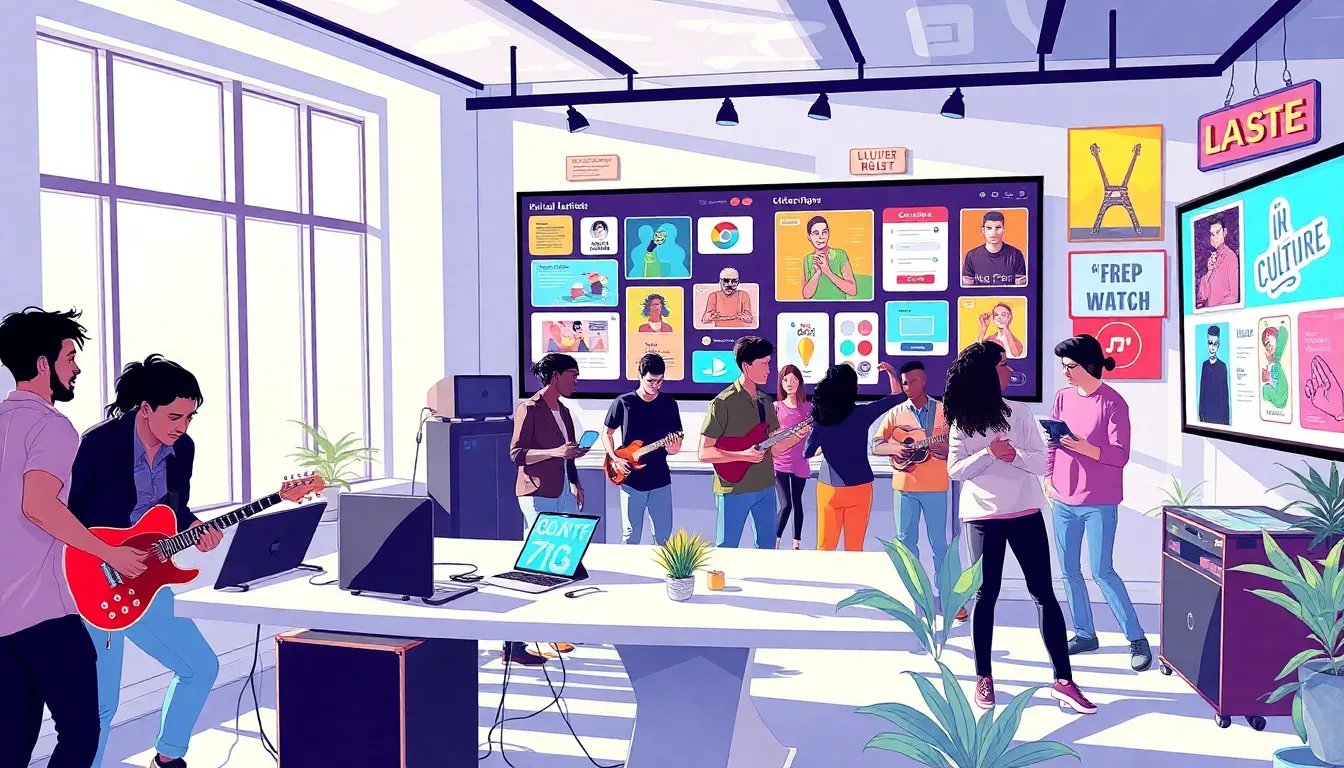In a world where creativity meets capitalism, the term “culture hustle” is making waves. Imagine blending artistic passion with entrepreneurial spirit in a cocktail of innovation that not only inspires but also pays the bills. Now, that’s a formula worth exploring. This article dives into the essence of culture hustle, revealing not just its origins and key elements, but also how it’s reshaping industries at lightning speed. So, buckle up, it’s time to dissect this vibrant phenomenon that’s more than just a trend: it’s a lifestyle.
Table of Contents
ToggleUnderstanding Culture Hustle

The Origins of Culture Hustle
The term “culture hustle” has roots embedded in the creative revolution of the early 21st century. Defined as the fusion of cultural pursuits with entrepreneurial endeavors, this movement emerged as a response to a rapidly changing global landscape. It began with artists and creators who saw the potential to monetize their unique talents in a digital age where social media, streaming platforms, and e-commerce became the norm.
Many creatives, rather than relying solely on traditional income streams, took matters into their own hands. They started utilizing technology, networking, and their unique perspectives to carve out new niches. From musicians promoting their work online to visual artists selling pieces through virtual galleries, the hustle didn’t just begin: it roared into existence.
Key Elements of Culture Hustle
At its core, culture hustle is built on several key elements:
- Innovation: Creatives leverage new ideas and technology to push boundaries.
- Collaboration: Artists often work together, blending different skills and industries to create something fresh.
- Marketing Savvy: Understanding how to promote oneself is as crucial as the artistry itself. Creatives become their own brand ambassadors.
- Community Engagement: Building a loyal audience and connecting genuinely with fans makes a massive difference whether it’s through social media or live events.
These pillars form the foundation of the culture hustle, allowing individuals to navigate the complex maze of modern creative industries with confidence.
Examples of Culture Hustle in Action
From podcasting to content creation, culture hustle manifests in various forms across multiple platforms.
One standout example is the rise of independent musicians who bypass major labels. Artists such as Chance the Rapper have made a name by distributing their music directly to fans. By fostering a robust online community, they create a loyal fan base while maintaining creative control.
Meanwhile, visual artists are turning to platforms like Instagram and Etsy to showcase their work. What used to be gallery-exclusive now thrives in the digital marketplace. Consider the trend of digital art sales and NFTs: artists are creatively leveraging technology to explore new revenue streams, often contributing to the growing phenomenon of culture hustle.
Content creators on platforms like YouTube and TikTok exemplify culture hustle as well. Many have mastered the art of crafting engaging content that attracts sponsorships, turning their passion into full-time careers. These examples highlight how culture hustle doesn’t merely exist: it thrives in diverse forms and settings, continually evolving.
Impact on Creative Industries
Challenges and Criticisms of Culture Hustle
While the culture hustle offers exciting opportunities, it comes with challenges. Many artists face burnout due to the pressure of constant content creation. Navigating an always-on culture requires not just talent but also resilience, a commodity that can sometimes feel in short supply.
Critics of the hustle often voice concerns about the dilution of art. They argue that the commercialization of creativity leads to a focus on profit over artistic integrity. It’s a balancing act: creators must navigate between their passion and their paycheck, often compromising artistic vision to secure funding or sponsorship.
Navigating the Culture Hustle Landscape
Even though these challenges, many creatives successfully navigate the culture hustle. They embrace flexibility, adapting to shifts in the market. Networking becomes vital: building relationships can provide support and collaboration opportunities.
Utilizing analytics and feedback also aids in refining their craft and understanding their audience. In the end, navigating this landscape involves strategic planning and a willingness to learn continuously as trends emerge.
Future Trends in Culture Hustle
What does the future hold for culture hustle? As technology advances, the merging of creativity and commerce will likely become even more pronounced. Expect to see further integration of virtual reality and augmented reality in art and performances, creating immersive experiences that blend creativity with interactivity.
Also, the rise of decentralized platforms may provide new avenues for creators. By moving away from traditional gatekeepers, artists can connect directly with audiences, ensuring equitable profit-sharing without sacrificing authenticity.
Also, as sustainability becomes a pressing concern, creatives are finding ways to incorporate social and environmental responsibility into their hustle. This shift may redefine marketing strategies by prioritizing ethical brands and sustainable practices.





